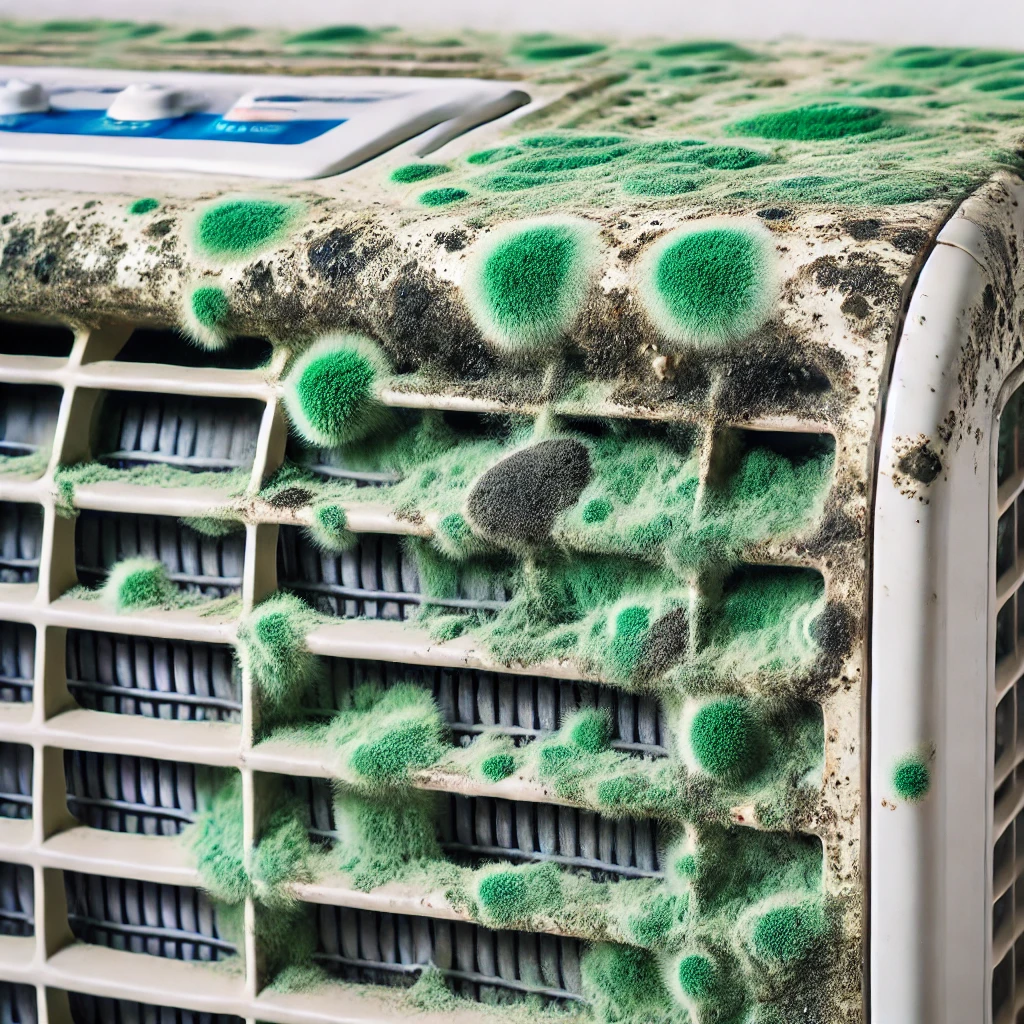Can You Have Mould in Your Air Conditioning Unit?

As summer rolls around and you turn on your air conditioner for the first time, you might be looking forward to escaping the heat with some cool, refreshing air. However, what you might not expect is an unwelcome musty smell that comes along with it. If you've noticed a strange odor when your AC is running, it could be a sign of mould growth within your unit.
Why Does Mould Grow in Air Conditioners?
Mould growth in air conditioning units is more common than you might think. Air conditioners provide the perfect environment for mould because they contain dark, moist areas that go unused for long periods, especially during the colder months. When your AC unit is off, moisture can accumulate and combine with dust and organic particles that naturally circulate in the air. This combination creates an ideal breeding ground for mould.
Recognizing the Signs of Mould
The most obvious sign of Mould in your air conditioning unit is a musty smell that appears when the AC is turned on. This odor can vary in intensity but generally indicates that Mould spores are being circulated into your room. Visually, you might notice streaks or clusters of black, brown, or greenish stains inside the unit, often accompanied by a fuzzy appearance. These are clear indicators that Mould has begun to take hold within your air conditioner.
How to Handle Mould in Your Air Conditioner
If you suspect that your air conditioner has Mould, the first step is to turn off the unit to prevent spores from spreading further into your home. Here’s what you can do next:
- DIY Inspection and Cleaning: For smaller, more accessible units, you can inspect and clean the AC yourself. Unplug the unit, remove the front grille, and inspect the filter and interior with a flashlight. If the Mould presence is light, you can clean the surfaces with a solution of bleach and water.
- Deep Cleaning: If the mould is extensive, or if your unit is a larger central system, deep cleaning might be necessary. This involves disassembling parts of the unit to reach the coils and other internal components. Use commercial cleaners designed for AC units to ensure all mould spores are eradicated.
When to Call the Professionals
While some mould can be cleaned on your own, extensive mould growth, especially in hard-to-reach areas, requires professional remediation. Professionals can safely remove mould without damaging your system or risking further contamination in your home. If you have a central air conditioning system or if the mould covers a significant portion of your unit, it’s best to contact a professional.
Regular maintenance is key to preventing mould growth. This includes changing filters regularly, using air purifiers, and ensuring that moisture doesn’t accumulate within the unit. During off-seasons, consider using an air conditioner cover to protect your unit from dust and debris.
Need Help? Contact Us!
Are you unsure if there’s mould growing in your air conditioning unit? Don’t take chances with your health and home air quality. Contact us today to schedule a mould test. Our experts can help identify any mould issues and recommend the best course of action to keep your air fresh and clean all summer long. Let us help you ensure that the air you breathe is safe and healthy. Call or visit our website now to book your consultation!





